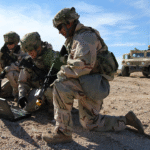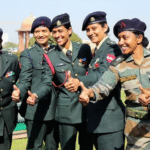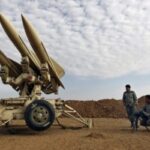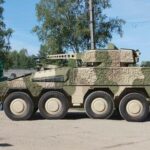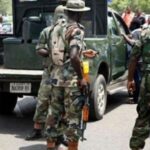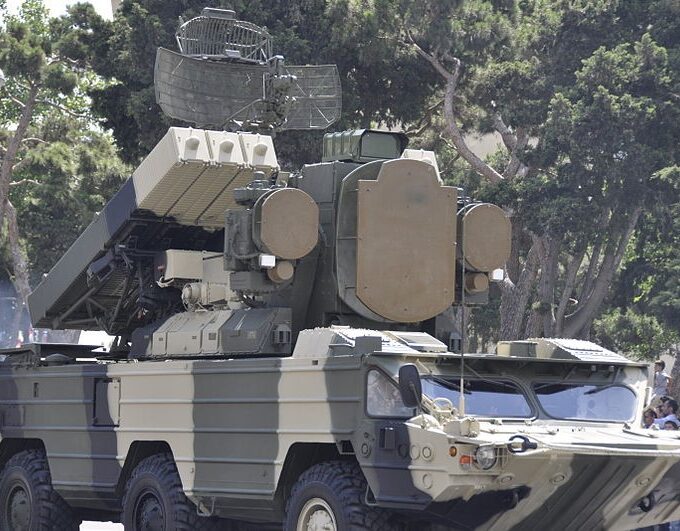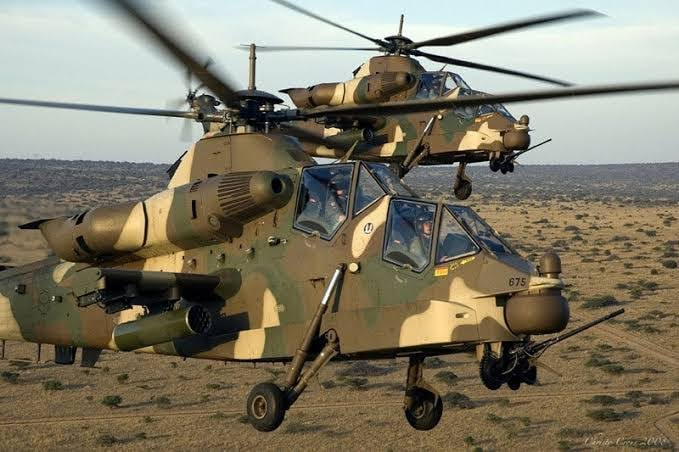Rise of the African Skies: The Strategic Role of Air Power in Counter-Terrorism
In a region where enemies move fast, blend with civilians, and exploit difficult terrain, the advantages of air power—speed, reach, and intelligence—are not just tactical, they are strategic.

As Africa grapples with the rise of transnational terrorism, insurgent networks, and asymmetric warfare, one domain is emerging as a game changer: the skies. The strategic deployment of air power—once a secondary component in African defence strategies—has become a vital tool in detecting, disrupting, and destroying terrorist operations across the continent. From precision strikes in the Sahel to reconnaissance over Somalia, African air forces are becoming indispensable in the evolving counter-terrorism architecture.
In a region where enemies move fast, blend with civilians, and exploit difficult terrain, the advantages of air power—speed, reach, and intelligence—are not just tactical, they are strategic. This article explores how air forces in Nigeria, Kenya, and Egypt are adapting and modernising to counter the new age of terrorism, the systems they employ, and the institutional shifts underpinning their growing relevance.
The Air Power Imperative: Speed, Surveillance, and Strike
Terrorist groups such as Boko Haram, al-Shabaab, and ISGS operate in challenging environments: deserts, forests, mountain ranges, and increasingly, urban spaces. In such terrain, ground forces often struggle with delayed response times, poor visibility, and exposure to ambushes and IEDs. Air power offers critical advantages:
- Rapid deployment of force over vast distances
- Real-time surveillance and intelligence gathering
- Precision strikes on high-value targets
- Logistics and casualty evacuation in inaccessible terrain
According to the African Centre for Strategic Studies (2024), air assets were directly involved in over 70% of successful counter-terror operations in Africa between 2021 and 2023, underlining the growing dependency on air platforms.
Nigeria: From Reactive to Dominant Air Posture
Nigeria, the continent’s most terrorism-affected nation, has rapidly transformed its air force into a central pillar of its counter-insurgency campaign. With Boko Haram and ISWAP operating in the North-East and bandits terrorising the North-West, Nigeria has leveraged its air power to shift the momentum.
Key Developments:
- Super Tucano Acquisition (2021): Nigeria procured 12 A-29 Super Tucano aircraft from the U.S. These light attack and surveillance aircraft have proven highly effective in close air support missions, particularly in dense terrain.
- ISR Capabilities: The Nigerian Air Force (NAF) has expanded its intelligence, surveillance, and reconnaissance (ISR) division with UAVs like the CH-3A and Wing Loong II drones (from China) and domestic platforms such as the Tsaigumi UAV, built in partnership with local firms.
- Integration with Ground Forces: Air-ground coordination has improved through the establishment of Forward Air Controllers (FACs), enabling more accurate strikes and reducing civilian casualties.
- Pilot Training and Doctrine: With help from the U.S. Air Force and Pakistani Air Force, Nigeria has upgraded its air combat training schools, emphasising night flying, urban targeting, and joint mission planning.
Despite these advances, challenges remain. Logistics maintenance, spare parts procurement, and limited indigenous manufacturing capacity continue to hamper sustained operations.
Kenya: East Africa’s Aerial Shield Against al-Shabaab
Kenya has long been on the frontline of East Africa’s fight against terror, particularly from al-Shabaab. Its Kenya Air Force (KAF) has been instrumental in safeguarding the country’s borders and supporting regional counter-terrorism missions under AMISOM/ATMIS in Somalia.
Key Developments:
- Fighter-Bomber Fleet Modernisation: Kenya operates F-5 Freedom Fighters, and in recent years has upgraded avionics and targeting systems to allow for precision-guided munitions.
- Surveillance Enhancements: The Beechcraft King Air 350i and Cessna Caravan ISR variants, obtained through U.S. assistance, have strengthened Kenya’s capacity for border surveillance and intelligence-gathering in remote regions such as Boni Forest.
- Drone Deployments: Kenya’s Defence Forces are increasingly using UAVs for reconnaissance missions along the porous Kenya-Somalia border, and are reportedly expanding their UAV fleet to include armed drones for rapid interdiction.
- Airbase Security and Infrastructure: The Moi Air Base in Nairobi and Laikipia Air Base have been reinforced with radar systems, mobile command centres, and hardened aircraft shelters to improve response and defence capabilities.
Kenya’s air power doctrine places a strong emphasis on strategic deterrence, border patrol, and rapid troop insertion, making it a model in regional air-ground integration.
Egypt: North Africa’s Aerospace Giant in Counter-Terrorism
Egypt, with the largest air force in Africa, has placed air power at the core of its counter-terror operations—especially in the Sinai Peninsula, where militant groups have posed a persistent threat to national and regional security.
Key Developments:
- Multi-Role Fighter Fleet: Egypt operates an extensive and modernised fleet, including Rafale jets (France), F-16s (U.S.), and MiG-29s (Russia), providing significant strike capability across multiple domains.
- Heliborne Operations: The Egyptian Air Force (EAF) uses Mi-17 and Apache helicopters for rapid insertion of special forces into insurgent strongholds, often coordinated with Egypt’s elite Thunderbolt Forces.
- ISR and Space-Based Assets: Egypt is among the few African countries to have military satellites (e.g., EgyptSat-A) and has developed indigenous drone capabilities, including the Noot UAV, enhancing its border and coastline monitoring capacity.
- Combined Arms Integration: Joint operations between the EAF, Army, and Navy are conducted under Operation Sinai 2018, demonstrating a coordinated response model to asymmetric threats.
Egypt’s technological superiority and investment in indigenous manufacturing place it in a unique position to influence aerial counter-terror strategies across North Africa.
Shared Challenges: High Altitude, High Cost
While African air forces are rising, they face several common challenges:
- High operational costs: Air assets, particularly combat jets and ISR platforms, demand sustained investment in fuel, munitions, and maintenance.
- Dependence on foreign procurement: Most nations rely heavily on the U.S., China, Russia, and Turkey for aircraft and parts, creating vulnerability in times of geopolitical shifts.
- Limited pilot retention: Skilled pilots often migrate to commercial airlines due to better pay and working conditions, leading to personnel shortages.
- Civilian oversight and transparency: Ensuring accountability in airstrike operations remains a concern, especially in densely populated conflict zones.
Strategic Cooperation and Continental Momentum
To overcome limitations and improve efficiency, African air forces are expanding cooperation through:
- The African Air Chiefs Symposium (AACS): A U.S.-Africa initiative fostering inter-operability, joint training, and doctrine harmonisation among African air forces.
- AFRICOM partnerships: Countries like Tunisia, Ghana, and Senegal are benefitting from U.S. support for airfield upgrades, logistics training, and ISR capability-building.
- UAV Innovation Hubs: Ethiopia, South Africa, and Nigeria are investing in drone research and development to reduce import dependency and tailor platforms to regional needs.
- Regional Response Units: ECOWAS, SADC, and the AU are discussing aerial components within their respective standby forces to improve rapid deployment capabilities.
The Sky as a Strategic Frontier
In the war against terrorism, the African sky is no longer empty. It is contested, surveilled, and increasingly decisive. Nigeria’s agile strikes in the northeast, Kenya’s ISR over al-Shabaab corridors, and Egypt’s surgical operations in Sinai all point to one reality: air power has become the backbone of effective counter-terrorism strategy in Africa.
Modern threats demand modern tools. As terrorist groups evolve, so too must Africa’s air forces—investing not only in aircraft and drones but in the intelligence, doctrine, and partnerships that give air power its edge. In the years ahead, dominance in the sky may very well determine peace on the ground.
Air Power by the Numbers (2023–2024):
- Nigeria Air Force flight hours (counter-terrorism missions): 11,000+ hours (2023)
- Kenya’s ISR drone missions near Somalia border: 200+ sorties (2023)
- Egypt Air Force strike sorties in Sinai: 1,300+ recorded missions (2022–2023)
- UAV fleets in African militaries: 20+ countries operating drones (both ISR and armed)
- Cost of A-29 Super Tucano fleet in Nigeria: $496 million (including training, logistics, munitions)
- Africa-wide defence budgets allocated to air forces: average 22% (Stockholm International Peace Research Institute, 2023)
Recent Posts
Categories
- Air & Aerospace16
- Border Security15
- Civil Security4
- Civil Wars4
- Crisis5
- Cyber Security8
- Defense19
- Diplomacy19
- Entrepreneurship1
- Events5
- Global Security Watch6
- Industry8
- Land & Army8
- Leadership & Training5
- Military Aviation5
- Military History27
- Military Speeches1
- More1
- Naval & Maritime9
- Resources2
- Security12
- Special Forces1
- Systems And Technology9
- Tech6
- Uncategorized3
- UNSC1
- Veterans6
- Women in Defence9
Related Articles
AIR & AEROSPACE – AIR DEFENCE SYSTEMS IN AFRICA: AN UNFINISHED BUSINESS
By December 2025, Africa’s air defence picture remains uneven, shaped by rising...
ByKing Richard Igimoh, Group Editor ALODecember 24, 2025AFRICAN AIR FORCES RISE TO THE FOREFRONT IN COUNTERTERRORISM OPERATIONS
Across the vast and volatile regions of Africa, air forces once limited...
ByKing Richard Igimoh, Group Editor ALONovember 21, 2025THE SPACE RACE: AFRICA’S EMERGING AEROSPACE PROGRAMMES
Africa’s skies are no longer just a backdrop to other powers’ ambitions...
ByKing Richard Igimoh, Group Editor ALOOctober 6, 2025MILITARY HELICOPTERS IN AFRICAN OPERATIONS
Military helicopters have become important assets in African operations, offering unmatched versatility...
ByKing Richard Igimoh, Group Editor ALOSeptember 23, 2025



